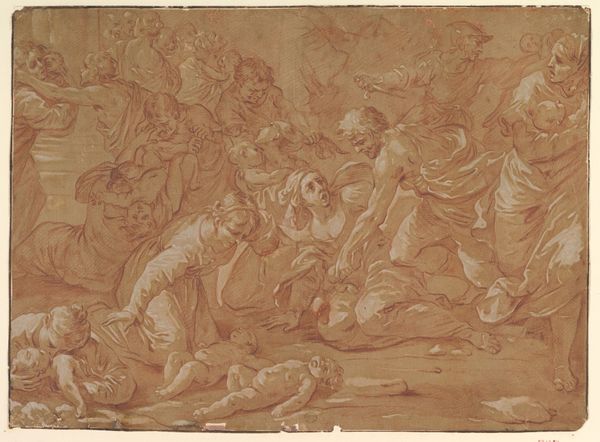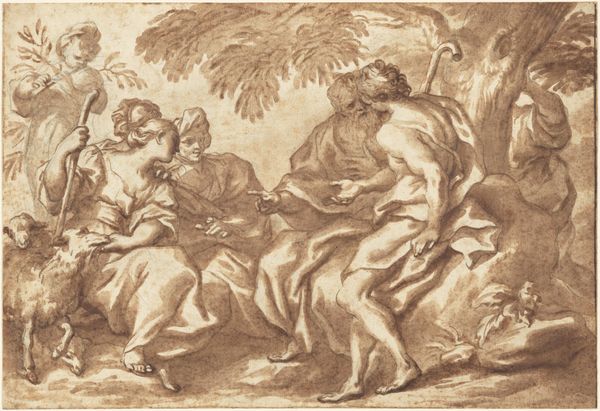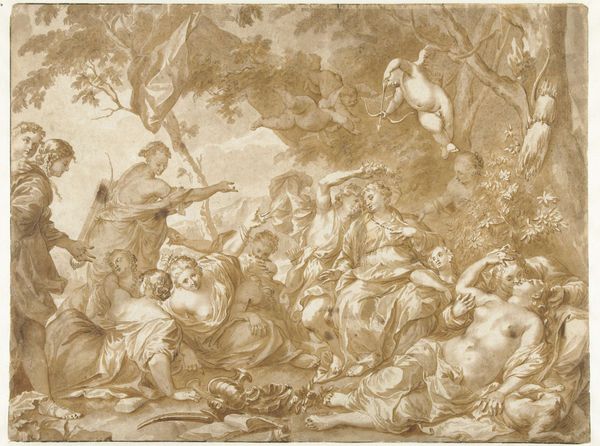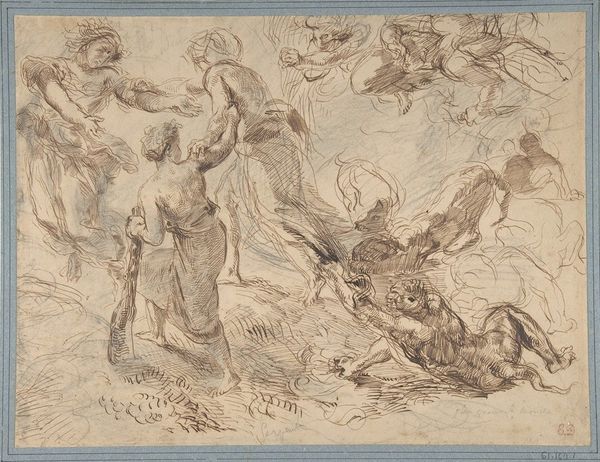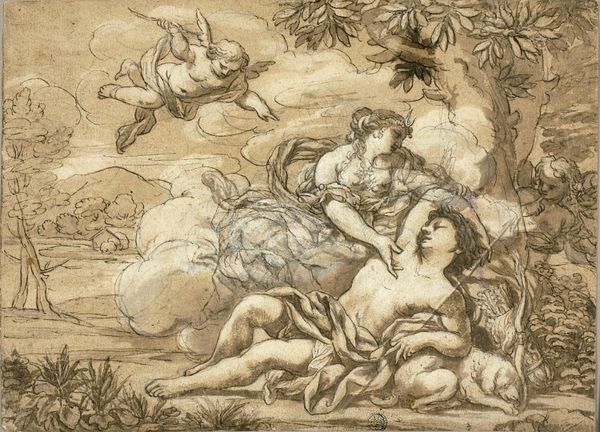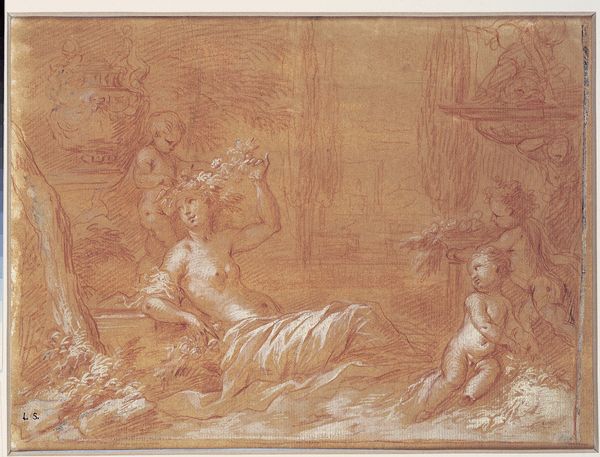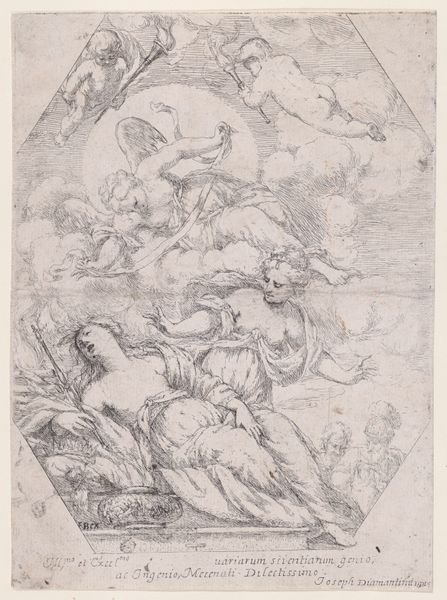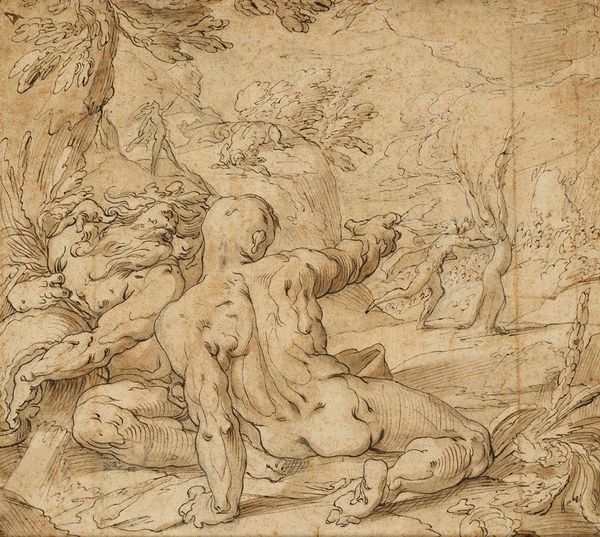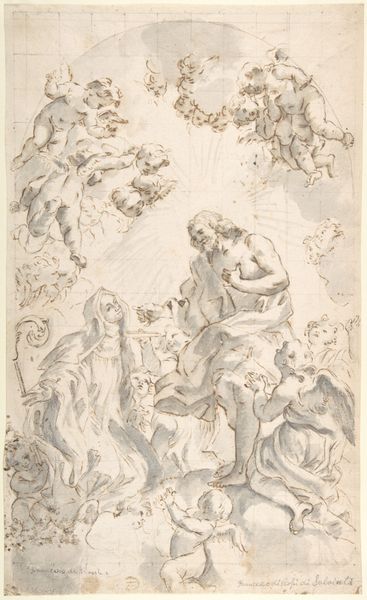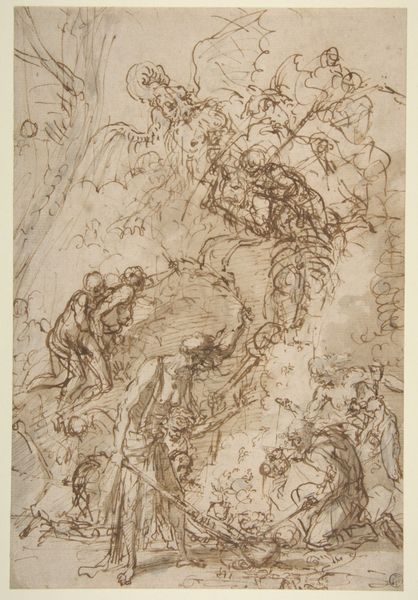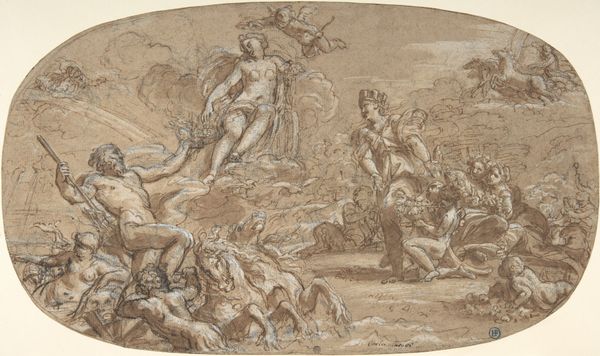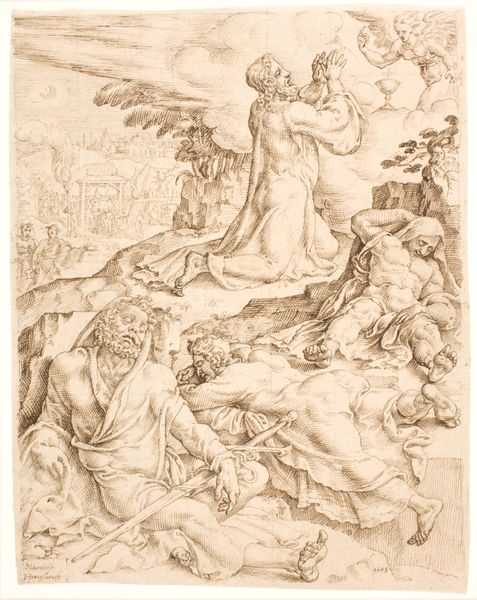
drawing, red-chalk
#
drawing
#
narrative-art
#
baroque
#
red-chalk
#
figuration
#
14_17th-century
#
portrait drawing
#
history-painting
Copyright: Public Domain
Editor: So, here we have "Samson tears the lion apart", a red chalk drawing by Michel Corneille the Younger. I'm struck by how dynamic it is – all this energy captured in a single moment. What stands out to you when you look at this piece? Curator: The figure of Samson instantly recalls classical heroic archetypes—Hercules grappling with the Nemean lion, for example. But more subtly, the act of tearing suggests a rending of veils, perhaps, an unveiling of inherent power lying dormant. Have you considered how Corneille employs red chalk here? Editor: I hadn’t really thought about the chalk itself, more just the lines creating form. What’s significant about it here? Curator: Red chalk was frequently used to portray the human form, its sanguine tone animating figures, and also to indicate the sitter’s temperament. Samson isn't merely fighting; he's in communion with raw strength, and even divine destiny. This struggle transforms him, don't you think? Look at the expressions in the faces in the background! What could they tell us? Editor: That’s a really interesting point! I was focusing so much on the central figures. It seems like they are reacting in all sorts of ways - fear, awe, shock maybe? Curator: Indeed! This range highlights the psychological impact of Samson's actions on the collective memory of his people. Do you perceive any recurring symbols or motifs connecting Samson's narrative to universal human struggles? Editor: I think the contrast between human and animal, and the theme of strength overcoming the odds are universal themes. This work shows us how individual agency can reshape one’s environment and sense of self. Curator: Precisely! The image thus resonates beyond a singular narrative, speaking to our own latent abilities. It reminds us that symbolic language can make powerful connections across time, revealing timeless psychological and spiritual truths.
Comments
No comments
Be the first to comment and join the conversation on the ultimate creative platform.
